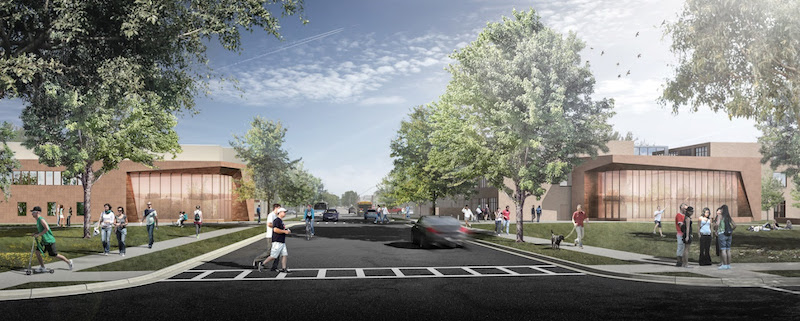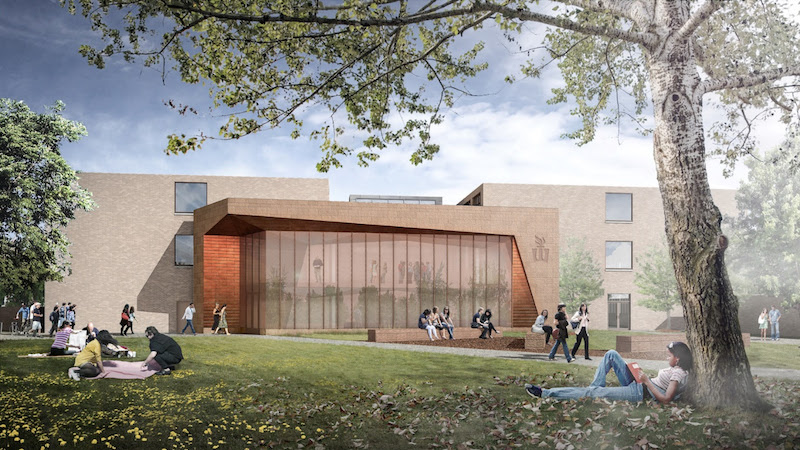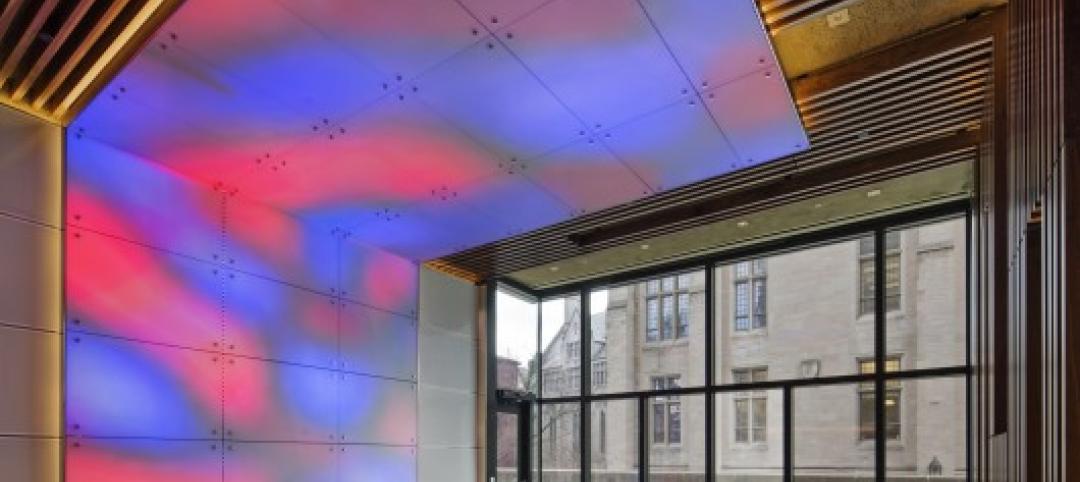A 100,000-sf mini-campus for teacher education is being created from three former school buildings at Winona State University in Winona, Minn. Once completed, the $25.2 million project will create a new section of campus and be home to the university’s College of Education.
Dubbed Education Village, the Leo A Daly-designed project retrofits three separate school buildings from different eras with learning spaces. The design creates learning environments that range from traditional classrooms with blackboards to advanced, technology-enabled active-learning classrooms, STEM labs, maker spaces, and special-education classrooms.
 Rendering courtesy Leo A Daly.
Rendering courtesy Leo A Daly.
The new mini campus includes Wabasha Hall, Wabasha Rec, and Cathedral School. Wabasha Hall is the new main hub of Education Village. It will function as a learning lab and gathering space with a large atrium, experimental classrooms, a child-care center, counselor-education facilities, and breakout spaces for group work.
Wabasha Rec is a former gym that will house physical education and adaptive-sports teaching programs. Cathedral School is a historic schoolhouse originally built in 1929. It will preserve low-tech classrooms relevant to the current spectrum of American schools and house post-graduate teacher-development functions, administrative offices, and the dean’s suite.
 Rendering courtesy Leo A Daly.
Rendering courtesy Leo A Daly.
“By placing a diversity of learning environments into a range of different building contexts, the design helps prepare future teachers for anything they will encounter in professional life,” says Joe Bower, Senior Architect in Leo A Daly’s Minneapolis office, in a release.
Kraus-Anderson is the construction manager for the project, which is expected to be finished in time for the Fall 2019 school semester.
Related Stories
| Jun 16, 2014
6 U.S. cities at the forefront of innovation districts
A new Brookings Institution study records the emergence of “competitive places that are also cool spaces.”
| Jun 12, 2014
Zaha Hadid's 'gravity defying' Issam Fares Institute opens in Beirut
The design builds upon the institute’s mission as a catalyst and connector between AUB, researchers and the global community.
| Jun 12, 2014
Tod Williams Billie Tsien Architects' design selected for new UCSC facility
The planned site is a natural landscape among redwood trees with views over Monterey Bay, a site that the architects have called “one of the most beautiful they have ever worked on.”
| Jun 12, 2014
Austrian university develops 'inflatable' concrete dome method
Constructing a concrete dome is a costly process, but this may change soon. A team from the Vienna University of Technology has developed a method that allows concrete domes to form with the use of air and steel cables instead of expensive, timber supporting structures.
| Jun 11, 2014
David Adjaye’s housing project in Sugar Hill nears completion
A new development in New York's historic Sugar Hill district nears completion, designed to be an icon for the neighborhood's rich history.
| Jun 9, 2014
6 design strategies for integrating living and learning on campus
Higher education is rapidly evolving. As we use planning and design to help our clients navigate major shifts in culture, technology, and funding, it is essential to focus on strategies that help foster an education that is relevant after graduation. One way to promote relevance is to strengthen the bond between academic disciplines and the campus residential life experience.
| Jun 9, 2014
Green Building Initiative launches Green Globes for Sustainable Interiors program
The new program focuses exclusively on the sustainable design and construction of interior spaces in nonresidential buildings and can be pursued by both building owners and individual lessees of commercial spaces.
| Jun 9, 2014
10 projects named 2014 AIA Small Project Award winners
Yale's funky new Ground café and a pavilion made from 53,780 recycled plastic bottles are among the nation's best new small projects.
| May 29, 2014
7 cost-effective ways to make U.S. infrastructure more resilient
Moving critical elements to higher ground and designing for longer lifespans are just some of the ways cities and governments can make infrastructure more resilient to natural disasters and climate change, writes Richard Cavallaro, President of Skanska USA Civil.
Sponsored | | May 27, 2014
Grim Hall opens the door to fire safety with fire-rated ceramic glass
For the renovation of Lincoln University’s Grim Hall life sciences building into a state-of-the-art computer facility, Tevebaugh Associates worked to provide students and faculty with improved life safety protection. Updating the 1925-era facility's fire-rated doors was an important component of the project.















